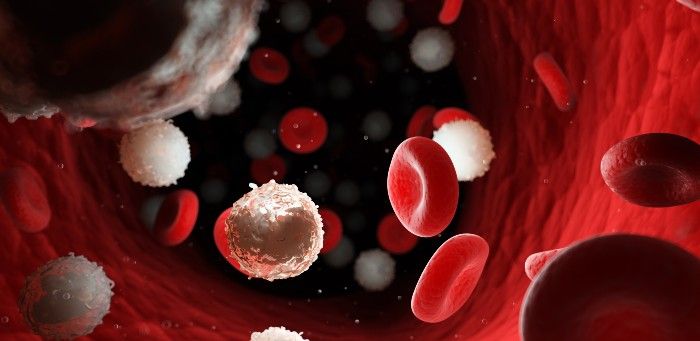T-allo10 Cell Infusion After Haploidentical HSCT Is Safe, Well-Tolerated, Prelim Data Show
The treatment seeks to improve immune reconstitution and graft-versus-leukemia immune response without increasing the risk of GvHD in children and young adults with hematologic malignancies.
(Adobe Stock)

A T-allo10 cell infusion appears safe and well-tolerated in children and young adults with hematologic malignancies when manufactured from a haploidentical donor, according to preliminary phase 1/1b data presented in a poster at the Transplantation & Cellular Therapy Meetings of ASTCT and CIBMTR (2022 Tandem Meetings), held in Salt Lake City, Utah, and virtually April 23-26, 2022.1
Investigators at Stanford University are conducting the single center, non-randomized, non-controlled open-label phase 1/1b trial (NCT04640987) in order to evaluate whether their T-cell immunotherapy, T-allo10, can result in better patient outcomes by improving immune reconstitution and graft-versus-leukemia (GvL) immune response after αβ+ T-cell and CD19+ B-cell depleted (αβdepleted) hematopoietic stem cell transplantation (HSCT), without increasing the risk of graft versus host disease (GvHD).
“Allogeneic HSCT is the only cure for most pediatric patients with acute leukemia,” investigators reported. “However, its use has been limited by the availability of [human leukocyte antigen] HLA matched donors. Recently, αβdepleted HSCT has enabled a significant broadening of the use of HLA-partially matched related and unrelated donors. Still, the rate of viral reactivations (~50 %) and leukemic relapse (25-30 %) after αβdepleted-HSCT remains high, mostly because of the poor immune reconstitution due to extensive ex vivo αβ T-cell depletion and use of pre-HSCT serotherapy.”
The T-allo10 product is made using donor CD4+ T cells that include regulatory type 1 T (Tr1) cells differentiated in vitro, which are specific for the host alloantigens and suppress host-reactive TCRαβ+ T cells that cause GvHD. It also includes polyclonal naive and memory TCRαβ+ T cells that can respond to pathogens and tumor antigens.
Investigators hypothesize that administering the T-allo10 infusion in patients who have already undergone αβdepleted-HSCT could accelerate immune reconstitution “by providing a source of TCRαβ+ T cells and supporting the generation of donor-derived naive T cells, therefore reducing the risk of infections and leukemic relapse, without increasing the risk of GvHD.”
The phase 1 primary end point is recommended phase 2 dose of T-allo10 at 3 different escalating doses (1x105, 3x105, and 1x106 cells/Kg) to be administered within 35 +/-7 days after αβdepleted-HSCT. Phase 1b primary end points included the following: safety, as defined by the absence of dose-limiting toxicities (DLT) 28 days following the T-allo10 infusion (given at the recommended phase 2 dose) administered after αβdepleted-HSCT; and improvement of IR, defined as an increased proportion of patients who reach the threshold of 50 CD3+CD4+ T-cells/μL by day +60 (+/- 10 days).
The study protocol consisted of a fully myeloablative conditioning regimen prior to αβdepleted-HSCT, as well as GvHD prophylaxis of anti-thymocyte globulin (ATG), with no post-HSCT pharmacologic GvHD prophylaxis. Patients then proceeded to T-allo10 infusion as long as there was no evidence of myeloid engraftment and no signs of grade II acute GvHD requiring > 0.5 mg/Kg of steroids or grade III/IV acute GvHD.
At the time of the poster presentation, investigators had enrolled 7 patients in the study (3 female, 2 male, 1 transgender male), and 6 of the 7 had received an infusion of T-allo10. The median age at enrollment was 13.95 years (range, 1.5–24).
To date, investigators have observed no DLT, defined as grade IV acute GvHD or grade 3/4 treatment-related adverse events. Compared with 25 historical controls, preliminary data support a more rapid post-HSCT immune reconstitution of CD3+CD4+ T cell in the first patient treated with 3x105/Kg T-allo10 cells, and 2 patients achieved the primary phase 1b efficacy end point.
“Our preliminary data show that the T-allo10 cell infusion is safe and well-tolerated when
manufactured from a haploidentical donor,” investigators concluded. “Antigen-specific Tr1 cells contained in the T-allo10 drug product are detectable in the recipients and traceable by TCR clonotype analysis.”